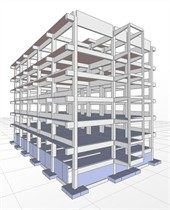Assessing An Apartment’s Earthquake Risk
With all the recent talk about how first home buyers should be looking to buy apartments off the plans, the option of purchasing an existing apartment appears to be often overlooked.
Of course with older apartments there are important things to consider. One key consideration is an apartment’s capability to deal with an earthquake.
David Clifton of Home Buyers Reports has provided us with what is involved in ensuring an apartment’s earthquake risk is minimised.
Buildings built to the current Building Code requirements are designed to deal with forces resulting from earthquakes. Unfortunately, older buildings are not always designed with this consideration. Many councils’ around New Zealand are requiring owners of older buildings to have their buildings checked by an engineer.
It is also becoming a requirement from some banks, insurance providers and tenants to provide this information. Typically a building owner will be notified in writing by one of these entities, that an assessment is required.
STEP ONE
Initial Evaluation Procedure (IEP)
The initial assessment done is a screening process called an ‘Initial Evaluation Procedure’ (IEP). This follows the guidelines set out by the New Zealand Society for Earthquake Engineering (NZSEE). The IEP allows us to screen a variety of buildings and building components and prepare a written report explaining the findings and the implications. The IEP assessment compares the existing buildings earthquake strength percentage to a New Building Standard (%NBS).

The key results from the IEP are as follows:
- 67% plus – Unlikely to be an earthquake risk
- 33% – 67% – Potentially an earthquake risk
- Less than 33% – Potentially earthquake prone
The industry standard requirement is that a building must reach a minimum of 33% NBS. If this is reached it is considered not to be ‘potentially earthquake prone’. The term ‘earthquake prone’ implies a high level of building damage would be expected. This will obviously impact on both the building and the occupants of the building during an earthquake.
If the building is assessed to be between 34% and 67% (or above) then the building may be listed as ‘potentially an earthquake risk’ but councils are unlikely to demand any building upgrade. The term ‘earthquake risk’ implies that the level of damage can be variable from high to minor depending on how close to 33% the result is. At this stage further investigation maybe required for buildings at ‘risk’ or that are ‘prone’. This is driven from the councils, banks and insurance providers that are requiring older buildings to achieve higher levels of %NBS, normally above 67%NBS to reduce the risk to occupants and the building.
STEP TWO
Detailed Engineering Evaluation (DEE)
If a building does not meet the required %NBS identified by an interested party then strengthening the structural components of the building is the main option that can be investigated. The DEE helps clients to assess the range of options available for increasing the rating to an acceptable level. The detailed assessment reviews the structure in significantly more detail than an IEP in order to provide a means for more accurate assessment of the building’s performance in an earthquake. The report will provide a review of the methods of upgrading the strength of the building. With the recent increase in these assessments and the number of upgrade projects it is now possible to apply outline costs of repair. This enables the key time, cost, quality and risk questions to be answered.
Alternative to DEE – Structural Assessment
A Structural Assessment can be undertaken to further define the IEP results on the basis that the:
- Building does not meet the required %NBS identified by an interested party
- The information on file or contained within the council property file consists of incomplete and/or poor quality drawing
- Confirmation of the required information would lead to substantial amount of on-site survey and testing to determine specifics of the structure.
The Structural Assessment is undertaken by a structural engineer and involves a more detailed non-intrusive site inspection to enable establishment of key frame sizes, detail of the structural connections, key structural weaknesses and enable review of the roof and wall bracing members and connections. This will enable the Structural Engineer to provide a more accurate assessment of the building’s performance in an earthquake and update the IEP %NBS rating.
















Dustin Lindale September 21, 2016 Blog, Tips for First Home Buyers